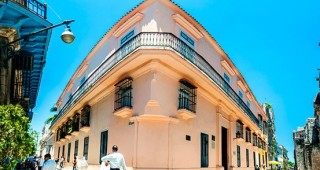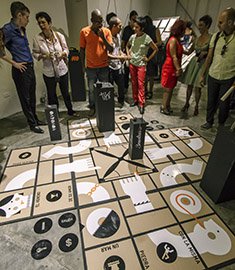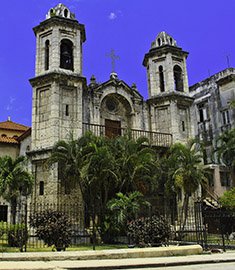
Edificio Bacardí LH  5
5
The first and main exponent of art deco in the city belonged to Emilio Bacardí and was the home to his famous rum company. After winning the contest held by Bacardí, architects E. Rodríguez, R. Fernán …
 Art DecoAdmission: FreeOpen: 9am-9pm dailyMonserrate esq. a San Juan de Dios, Habana Vieja
Art DecoAdmission: FreeOpen: 9am-9pm dailyMonserrate esq. a San Juan de Dios, Habana Vieja 
Callejón de Hamel LH  5+
5+
The narrow two-block long alley between Aramburu and Hospital streets in Centro Habana has over the years become a shrine to Afro-Cuban religions through the art created by Salvador González. The buil …

The Malecón LH  5+
5+
The Malecón, first named Avenida del Golfo, is Cuba’s most famous sea-side avenue. The project was undertaken by Don Francisco de Albear, Cuba’s greatest engineer at the time. Albear came up with a co …

Iglesia de Jesús de Miramar LH  5
5
Opened in 1953, this is Cuba’s second largest church, which is visible for several blocks due to its vast dome built in Roman-Byzantine style. The Jesús de Miramar church boasts 14 large mural paintin …
 OtherOpen: 9am-noon, 4-6pm daily; Mass: 9am Mon-Fri; 9am, 5pm Sat-Sun; To visit at other times, enter via the sacristy5ta #8003 entre 80 y 82
OtherOpen: 9am-noon, 4-6pm daily; Mass: 9am Mon-Fri; 9am, 5pm Sat-Sun; To visit at other times, enter via the sacristy5ta #8003 entre 80 y 82 
Centro de Arte Contemporáneo Wifredo Lam LH  5+
5+
The north-west corner of the square is occupied by the 18th-century Casa de los Condes de Peñalver, which has at different times served as a post office, a bank and a school. Today, it houses the Cent …

Plaza Vieja LH  5+
5+
The 16th-century Plaza Vieja has always been a residential rather than a military, religious or administrative space, and is surrounded by elegant colonial residences, combined with a few very strikin …

Paseo del Prado LH  5+
5+
In colonial times, this promenade received several names, including Nuevo Prado, Alameda de Extramuros, Paseo de Isabel II and Paseo del Prado, and with cuba’s independecne, it became Paseo de Martí. …

Almacenes de San José LH  5
5
This former harborside warehouse was built in 1885 and is considered the oldest depository in Old Havana. The sober and imposing façade that looks out onto the city conceals the building’s steel struc …
 BaroqueAdmission: FreeOpen: 9am-8pm dailyAvenida del Puerto y San Ignacio, Habana Vieja
BaroqueAdmission: FreeOpen: 9am-8pm dailyAvenida del Puerto y San Ignacio, Habana Vieja 
Cámara Oscura LH  5
5
Located on the top floor of the eclectic-style early 20th-century Edificio Gómez Vila—the plaza’s tallest building (35 meters/115 feet)—on the northeast corner, the Cámara Oscura provides a 360-degree …

Quinta Avenida LH  5+
5+
Initially called Avenida de las Américas, Quinta Avenida (Fifth Avenue) stretches from the tunnel that connects it to Calzada Street, in Vedado, to the Santa Ana River, in the locality of Santa Fe. Co …













